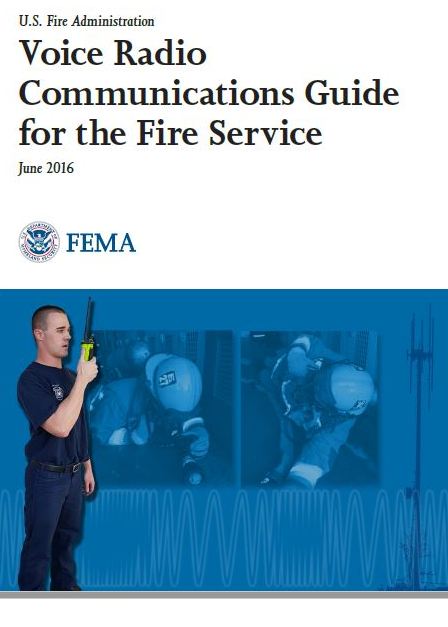The Federal Emergency Management Agency (FEMA) U.S. Fire Administration (USFA) released a new guide on radio communications for the fire service. The Voice Radio Communications Guide for the Fire Service comprises 10 sections covering basic radio technology, digital and analog technology, conventional and trunked radio systems, portable radios, system design and implementation, interoperability and spectrum licensing, and future technology convergence with FirstNet.
In the Introduction the guide provides a look into the challenges of communicating when fighting fires. “The life safety of firefighters and citizens depends on reliable, functional communication tools that work in the harshest and most hostile of environments. All firefighters, professional and volunteer, operate in extreme environments that are markedly different from those of any other radio users. The radio is the lifeline that connects the firefighters to command and outside assistance when in the most desperate of situations. To operate safely in these dynamic environments, it is imperative that firefighters have the ability to immediately communicate information accurately. Factors that separate fire from other disciplines:”
- Communications on the fireground are fast-paced and may be chaotic.
- Work position. Firefighters are often on the floor crawling.
- Visibility challenges including heavy smoke and dark situations.
- SCBAs pose several challenges: Voice ports on facepieces are difficult to communicate through and restrict field of vision.
- Temperature and humidity.
- High noise environments.
- Gloves and other personal protective equipment (PPE) restrict vision, hearing, and the manual dexterity required to operate radio controls.
- Buildings vary greatly in construction and complexity. All buildings to some degree resist penetration of radio waves.
The USFA worked with labor union International Association of Fire Fighters (IAFF) to develop the guide. The U.S. Department of Homeland Security (DHS), Science and Technology Directorate (S&T), First Responders Group, Office for Interoperability and Compatibility (OIC) supported the partnership.
